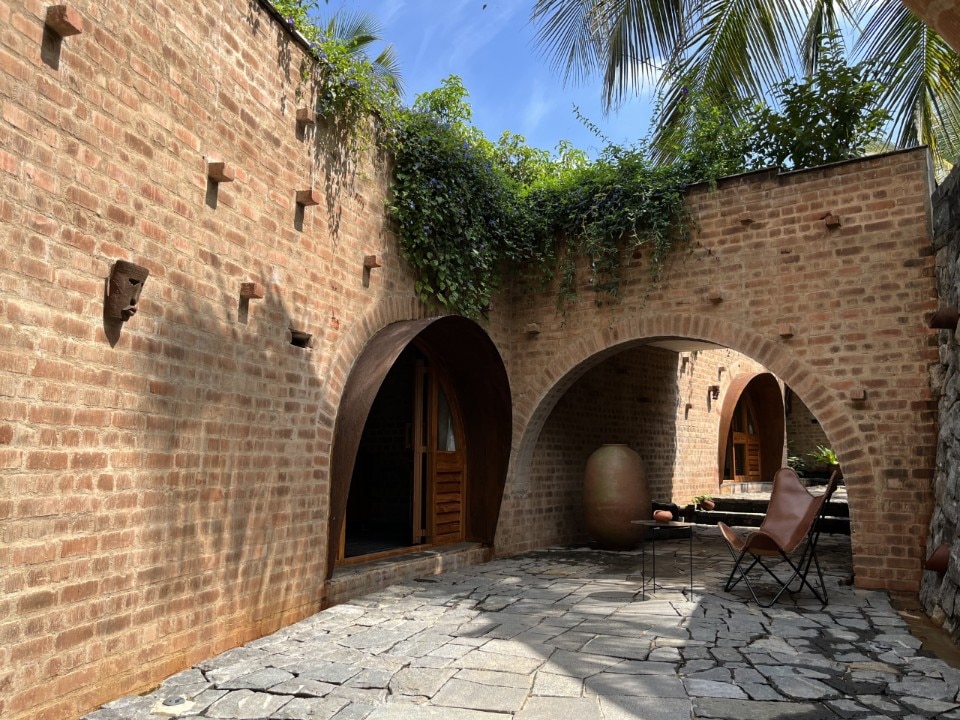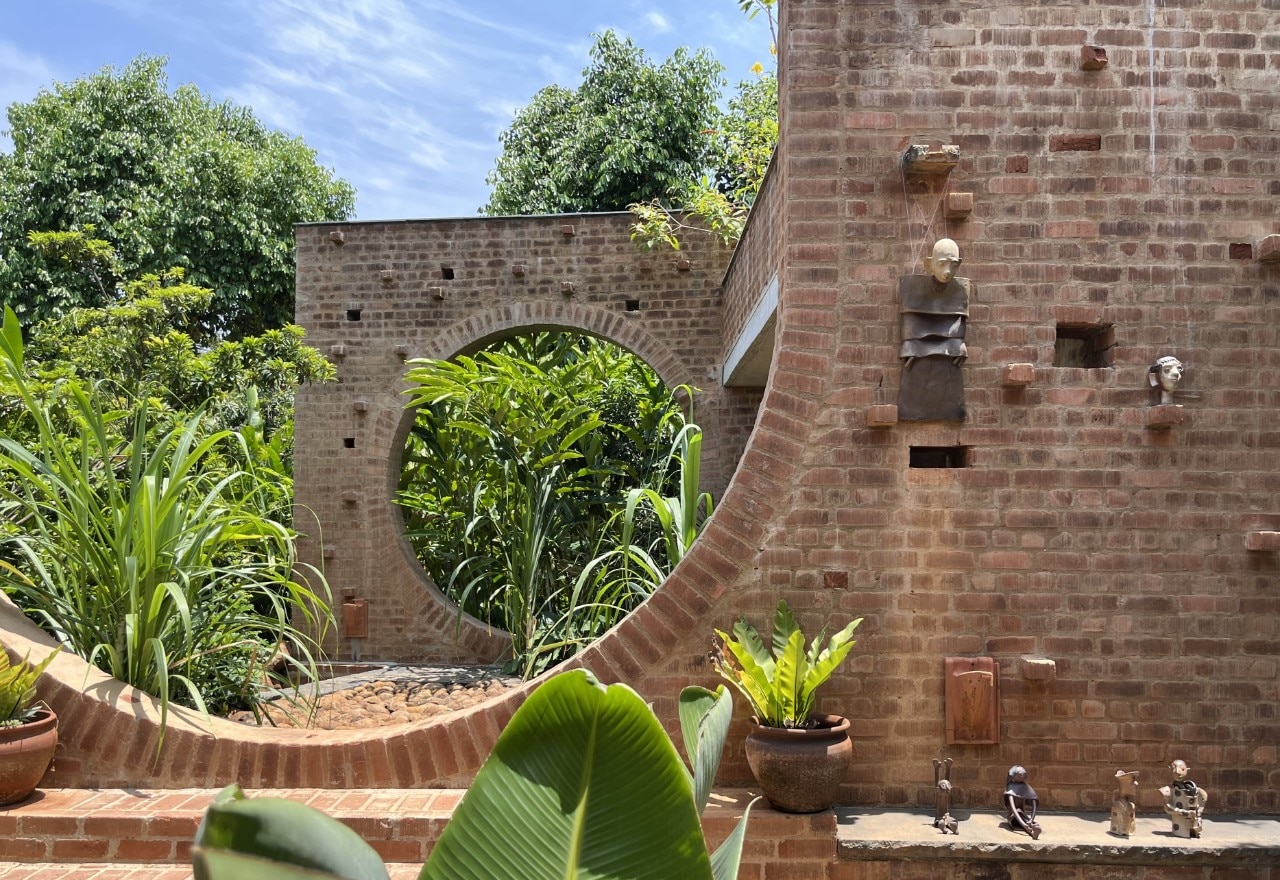This article was originally published on Domus 1091.
In a world increasingly obsessed with hubristic architectural statements, some studios, such as the Bengaluru-based A Threshold, are thinking greener and quietly reshaping the future of the planet as well as the field of architecture and design.
The studio’s eco-friendly and multifunctional community centre, Subterranean Ruins, embraces a different kind of grandeur – one rooted in harmony with its local soil, identity and culture. Built on a lush 1.2-hectare fruit orchard in Kaggalipura, a short drive from the densely populated southern Indian megacity of Bengaluru, this award-winning architectural venture offers a perfect recipe for sustainable design.

Staying in this rustic hideaway (it also doubles as a farm stay on weekends) might feel like living inside a piece of art. And the name itself isn’t mere provocation; it’s a surprisingly apt description for this earthen sanctuary. “Subterranean” reflects the project’s effortless integration and innovative use of the natural ebbs and flows of its landscape, while “Ruins” evokes the primitive beauty of Indian caves such as Ajanta, Ellora and Elephanta.
Our design not only respects the land’s original character but also offers inhabitants a connection to the earth, creating a series of intriguing spaces that evoke a sense of shelter and intimacy.
Avinash Ankalge
The centre’s building appears camouflaged at first but quickly captures one’s senses with its cave-like spaces that loop back into the earth with organic ease. The natural topography of the flatland, with its four-metre steep slope, provided an opportunity for the built structure to submerge into the landscape while minimising disruption to the environment and serving practical benefits such as natural insulation and climate control.

A rainwater collection system was developed concurrently to support existing farming practices as well. “Our design not only respects the land’s original character but also offers inhabitants a connection to the earth, creating a series of intriguing spaces that evoke a sense of shelter and intimacy,” explains architect Avinash Ankalge, who co-founded A Threshold with Harshith Nayak in 2020. The exposed walls and flooring, which imbue the space with a sense of place and history, were made with red bricks and natural stones that were obtained from nearby quarries and kilns. In keeping with local architectural traditions, the bricks and stone were bound together with lime and mud mortar that contained a minimal five per cent cement.
By providing job opportunities to villagers who had lost employment, we feel the building’s meaning was enormously enhanced as it brought communities together at a time of great human suffering.
Avinash Ankalge
Artisans, craftspeople and masons from villages near Kaggalipura played a pivotal role in the construction process, ensuring that traditional techniques were honoured and indigenous skills were preserved. Boulders excavated on-site found new life as retaining walls and outdoor landscaping features, while soil were repurposed for pathways, fostering “a deeper connection to the surrounding community and environment”, Nayak adds.

Construction began during the challenging Covid-19 lockdown in 2021 when there was an acute scarcity of skilled labour in the area. But Nayak and Ankalge took advantage of the health emergency. They trained the local workforce, which helped transform the project into a collaborative effort.
“By providing job opportunities to villagers who had lost employment, we feel the building’s meaning was enormously enhanced as it brought communities together at a time of great human suffering,” says Ankalge, adding that Subterranean Ruins exemplifies his studio’s belief in the idea of “space as a resource” – a holistic approach that cares about utilising space over time and emphasises flexibility, multifunctionality and sustainability beyond just materials.

Through this project, Ankalge and Nayak wanted to explore the social potential of architecture – above all, the notion that design should be an extension of nature rather than an evil force that dominates it. “When you design buildings that adapt to their contexts, they become integral parts of the ecosystem and help instil a sense of belonging, pride and ownership within the community,” says Ankalge.
Today, unlike its name, Subterranean Ruins is a vibrant communal hub that is often used for activities such as art exhibitions, workshops for local schoolchildren, and particularly for nurturing the Kaggalipura natives. Architecture, it seems, is all the better if it is built by the community, of the community and for the community.
Opening image: A Threshold, Subterranean Ruins, Bangalore, India, 2022. Photo A Threshold


















